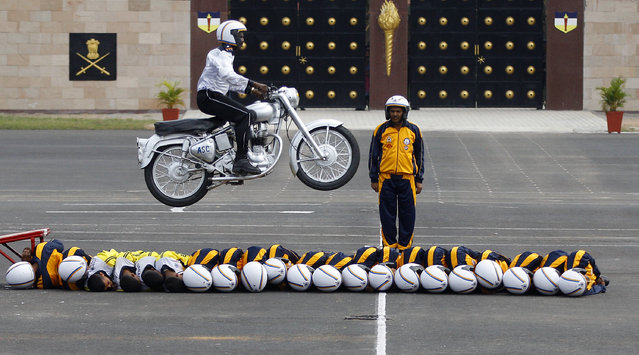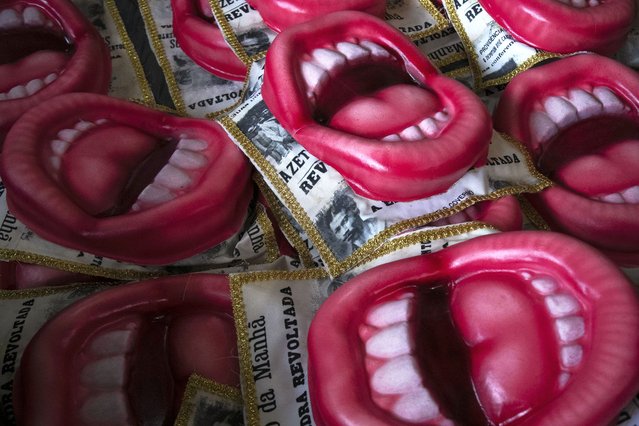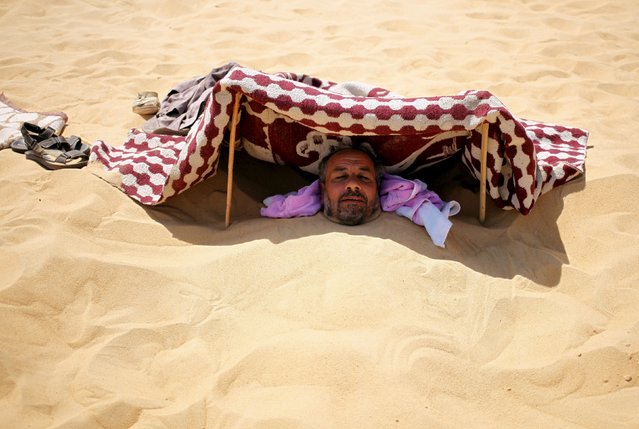
Divers swim beside millions of silverside fish at Devil's Grotto, Cayman Islands. Swimming in unison, millions of silverside fish dwarf the divers. The fish create waves of silver light as they move around the grottos that lie beneath the surface of the Caribbean Sea. These amazing photographs were captured by Belgian photographer Ellen Cuylaerts, 44, on a diving trip to the Devil's Grotto, Cayman Islands. (Photo by Ellen Cuylaerts/This is Guavo Media)
08 Sep 2014 11:08:00,post received
0 comments







